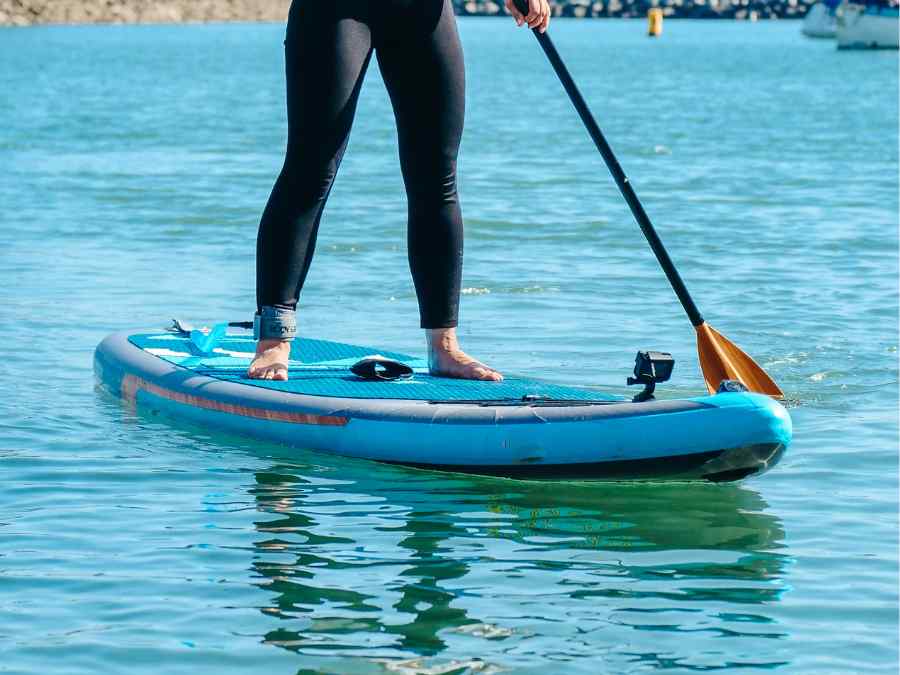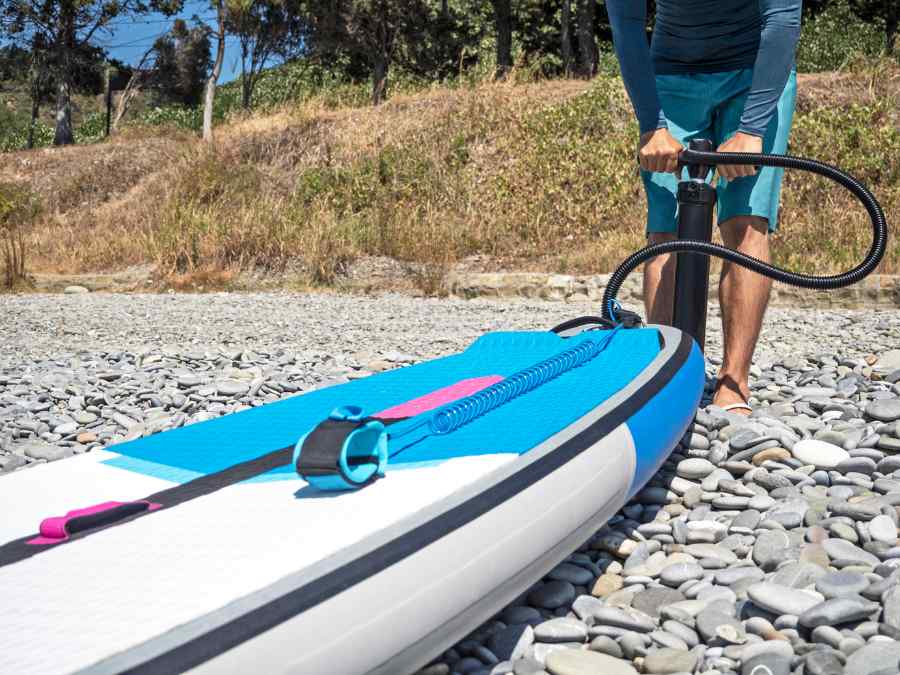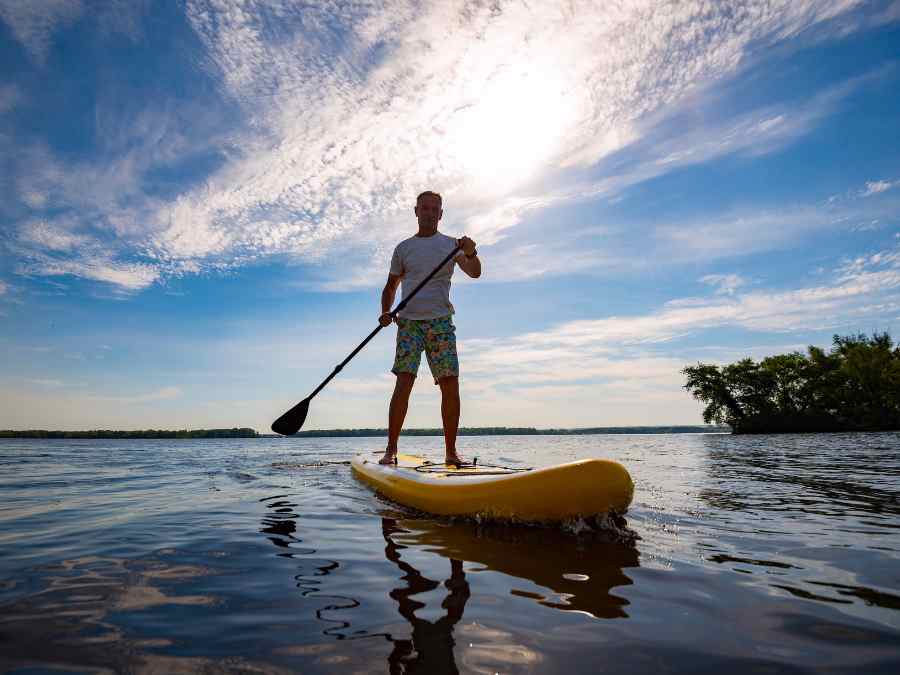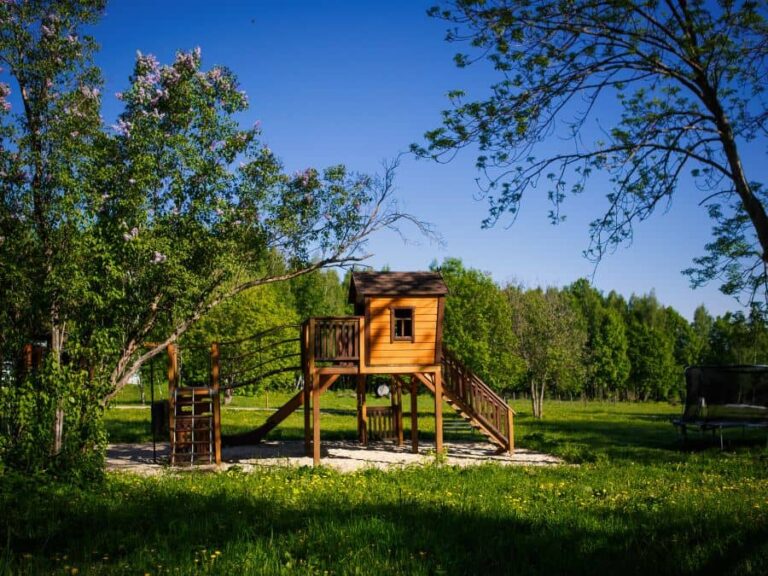How to buy A Stand-Up Paddle Board: The Ultimate SUP Buying Guide
Standup Paddleboard (SUP) is an ever-growing popular pastime across coastal countries. You can also notice a craze for getting better paddle boards in this game.
I often get this question: how to buy a stand-up paddleboard? I always answer that you must consider several factors before buying a SUP board. Are you a beginner or a pro? What is your priority: speed, maneuverability, stability, or portability?
You might get perplexed by all the twists and turns you will encounter on the internet. You need to know your priority to purchase a SUP.
However, let me narrow down your confusion. These are the six things you must know before purchasing a SUP board.

Inflatable Vs. Solid Board
Inflatable and solid boards are the two most common boards you can choose from. Each has its pros and cons. Let’s unravel them.
Inflatable Board
Inflatable SUPs have made paddle boarding more accessible for all sorts of people. These boards are inexpensive and portable yet rigid enough to hold considerable weight with their PVC exterior.
These SUPs can be carried in bags and pumped within 10 minutes. Unlike solid boards, you don’t need extra spaces to store them. But inflatable paddle boards are not optimal for racing or durable performance.
It would be best if you got an inflatable board when:
- You want to explore remote places with portable SUP.
- You are boarding in whitewater in doing yoga.
- You don’t have storage and don’t want to spend much.
- You are a beginner or mid-level paddler.
- And you don’t intend to race with these boards.
Solid Board
Solid boards are usually epoxy, fiberglass, plastic, and wood. They are more stable and durable than inflatable boards.
Solid boards are used in most serious boarding competitions and by pro paddlers. They offer natural maneuverability and speed, but the cumbersome weight and non-foldable shape have made them difficult to carry.
It would be best if you bought a solid board when:
- You want maximum speed, control, and high performance.
- You are a racing pro and can maneuver accordingly.
- You need stable gliding with a smooth aerodynamic profile.
- You have a place to store and a transport to carry your SUP.
SUP Hull Type: Planing vs. Displacement
Hull type refers to the body of a paddle board. Usually, there are two options here: Planing Hull and Displacement Hull.
Planing
You have seen typical surfboards. Similar to them, Planing hulls are flat and wide, making them all-rounder and versatile in every aspect save for racing.
The flat body makes them stable and maneuverable. Planing hulls are optimal for fishing, surfing, yoga, and whitewater rivers.
Displacement
Displacement hulls or rigid boards have pointed noses at both ends to displace water and move forward faster. Canoes and kayaks have similar hulls. SUPs with displacement hulls are faster than planing.
Displacement hulls are best for racing and touring in open water. But these hulls are difficult to maneuver and are less stable than planing hulls.

SUP Board Size
The board size matters a lot when you choose a paddle board. While measuring the ideal size, you must consider the length, width, and thickness. The thickness should be proportionate to the length and width of the SUP and your weight.
Length
An ideal paddle board should have a length between 10-12 feet with a planing hull. It gives a smooth and stable paddling experience while fishing, cruising, and doing yoga.
Boards under 10 feet are suitable for kids and surfing the waves. And boards more than 12 feet are usually fast and furious. Thus they are better suited for racing and touring.
Width
The ideal width of your stand-up paddle board is proportionate to stability. The wider the board, the more stable it becomes. But wide boards are also slower. 30-32 inches are the ideal width for a SUP board.
But wait a second. Are you a skinny person or a Big show? Do you want to stay a long time on the board or short?
A skinny person should go for a narrow SUP. A bigger man should do the opposite. And those who want to go for a board tour must get a wider SUP. I always like wider boards for pros and newbies as they offer better stability.

Fin Setup
Stand-Up Paddleboards have fins to track and stabilize. The most common options are one-fin and three-fin setups. Boards with single fins get incredible swift movement power. Though a single fin offers speed, it could give better navigating ability.
For better maneuvering, three fin setup is the best. Three fins provide a stable journey in whitewater and waves.
Some other types of fins are available today, including 2+1 Setup and removable fins. Removable fins are also used in Inflatable SUPs.
Weight-Volume Ratio
The volume here means the amount of water displaced by the SUP, generally expressed in liters. The standard rule is that your weight and the displaced-water volume should be in 1:2(Kg/Liter) proportion.
The weight includes any gear, food, and stuff you carry. That means if your weight is 100 Kg (including anything onboard), you must choose a 200 liters volume board. Less than that volume would make the board faster but unstable.
Contrarily, a massive volume board will sink a few inches lower and thus slowing down the movement. This ratio applies to solid boards only. Inflatable boards don’t give you enough choice, though.
SUP Pricing
The cost of a SUP is a crucial factor to notice before the final purchase. We all want the maximum output at minimal cost, don’t we?
Though you can get your hand on a basic inflatable SUP for $400-500, an average inflatable SUP should cost anywhere between $700-1000. Solid stand-up paddle boards are more expensive as their cost range from $700-2000. High-performance boards should be available for $1200-1500.
If you are a newbie, I recommend a basic-level solid board for $1000. Or if you want portable SUP, then buy an inflatable one for $600. However, the price may vary in different regions.
Which Stand Up Paddle Board Should You buy?
Now, ask yourself, what are your preferences? If you want a portable SUP, inflatable boards are the best. Need one for Kid? Then go for Inflatables as well.
Buy a wider, solid SUP for durable use and high-performance paddling, yoga, and fishing. But if you wish to surf, buy a short-sized board.
Go for a narrow displacement hull in case you want a racing SUP. Take a three-fin setup to stabilize your SUP.

Which Paddle Should You Get?
A paddle is an essential piece of equipment for a SUP board. An ideal paddle should be 8-12 inches taller than your height for maximum leverage. Feel the paddle handle and find out whether it is ergonomically designed.
The shaft is usually made of aluminum or fiberglass. Carbon material and kevlar-made shafts are even better due to their high impact resistance.
Now, choose the blade of the paddle. More oversized paddles are suitable for long-distance paddling, touring, and racing because they can displace more water. Small paddles are good for surfing and fishing. They are also ideal for ladies.
Final Verdict
So, how to buy a stand-up paddleboard? You have got some crucial ideas now. List your preferences first and then match the criteria.
Then buy the most-suitable paddleboard.







